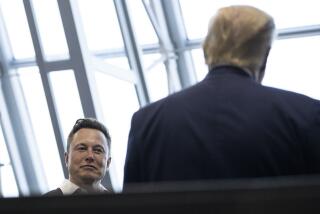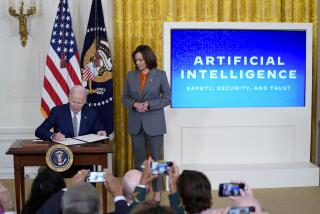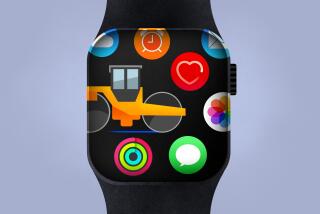Marketing Creations No Easy Task
- Share via
Ever since the nation’s founders included patent laws in the Constitution, small inventors have played a large role in the development of American industry.
They have tinkered and toyed in garages and workshops, coming up with products as diverse as the electric light bulb, the telegraph and the automobile.
But tough economic times and a trend toward corporate or think-tank invention have made it difficult for small inventors to bring their products to market.
Entrepreneurs say that one way to do so is to license inventions to established companies. That requires the inventor not only to develop contacts but, more important, to stir widespread interest.
Greg Beck, a lawyer and president of the Orange County Venture Forum in Laguna Hills, encourages inventors to make the effort to seek licensing or joint-venture agreements. The Venture Forum, which meets each month at UC Irvine’s University Club, was founded to provide networking opportunities between those with ideas and those who have the money to turn them into reality.
Beck is bullish about inventors. Despite hard times, he said, there is always room in the marketplace for innovation.
“The economy is negative,” Beck said. “But I still think there’s money out there. If somebody has a good idea, it’s a tough road anyway.”
While the small inventor may not be an anachronism in the world of technology, joint ventures that spur further research and development are becoming more popular.
“Scientific achievement today, especially in the medical device field, is becoming more of a collective effort,’ Beck said. “It is definitely becoming more complex and expensive.”
Inventor Joe Bales, who has attended Venture Forum meetings, illustrates that point.
An experienced design engineer for Shiley Inc., a medical-products firm in Irvine, Bales left the company two years ago to set out on his own. Since then, he and two doctors have sunk $150,000 into the design of a tracheotomy tube for children.
He shunned venture capitalists because “you give up your company to them.” Instead, he initially planned to market the device on his own. Bales changed his plans recently, however, when two companies approached him. Bales is now hammering out an agreement, either a licensing deal or a joint venture, that will give him a say-so over the product’s manufacture and distribution.
The company he eventually chooses to work with will also pay for the human clinical trials necessary to market the tracheotomy tube. When asked if he expects to retire on the product, he quipped: “I just hope to make my investment back.”
The reason the tracheotomy tube will probably be a success despite the recession, said Dr. William New, is because it doesn’t reinvent the wheel.
New, who is president of Novent Group, a medical-device consulting firm in Palo Alto, has been touring the medical convention circuit in recent months preaching austerity. Research and development money, he said, should be used sparingly, even by the strongest medical-device companies touting the best profit margins. Unnecessary risks, New said, are just that: unnecessary.
“If you come up with a whizzy, dizzy device,” New said, “unless it displaces an old device in a cost-effective, no-risk way, then you shouldn’t embrace it. That’s the market reality.”
That said, New suggested that small inventors interested in licensing or distribution agreements or joint ventures should steer clear of the larger companies, such as Johnson & Johnson and Baxter International. Instead, New said, inventors should do their homework and find compatible one-product companies that are solvent, aggressive and ready to branch out with new product lines.
Look for companies that have not gone public yet but are strongly considering doing so, he suggested. “They need that second fire to get them going.”
Norman Rolston, 61, a Vancouver, Canada, crane company owner, had the rare combination of luck, stamina and creative energy to make his garage invention work.
After watching his aunt struggle with her walker three years ago, Rolston, as the legend goes, strode into his garage, took apart a bicycle and a shopping cart, and put them back together in an unusual configuration.
The result is the Able Walker, a product that he began selling immediately through mail-order catalogues, door to door and to convalescent homes.
Unlike conventional walkers, which must be picked up and moved with each step, the Able Walker, which uses wheels instead of legs, is rolled along the floor.
Rolston, who has a seventh-grade education, smiles when asked if the Able Walker, now sold across the United States and Canada through a distribution network he set up, made him a millionaire.
“I am rich by making all these people’s lives better,” he said. “I’m just glad that this is not a peanuts-and-popcorn, bells-and-whistles type of contraption. It’s really a value to humanity.”
More to Read
Inside the business of entertainment
The Wide Shot brings you news, analysis and insights on everything from streaming wars to production — and what it all means for the future.
You may occasionally receive promotional content from the Los Angeles Times.










